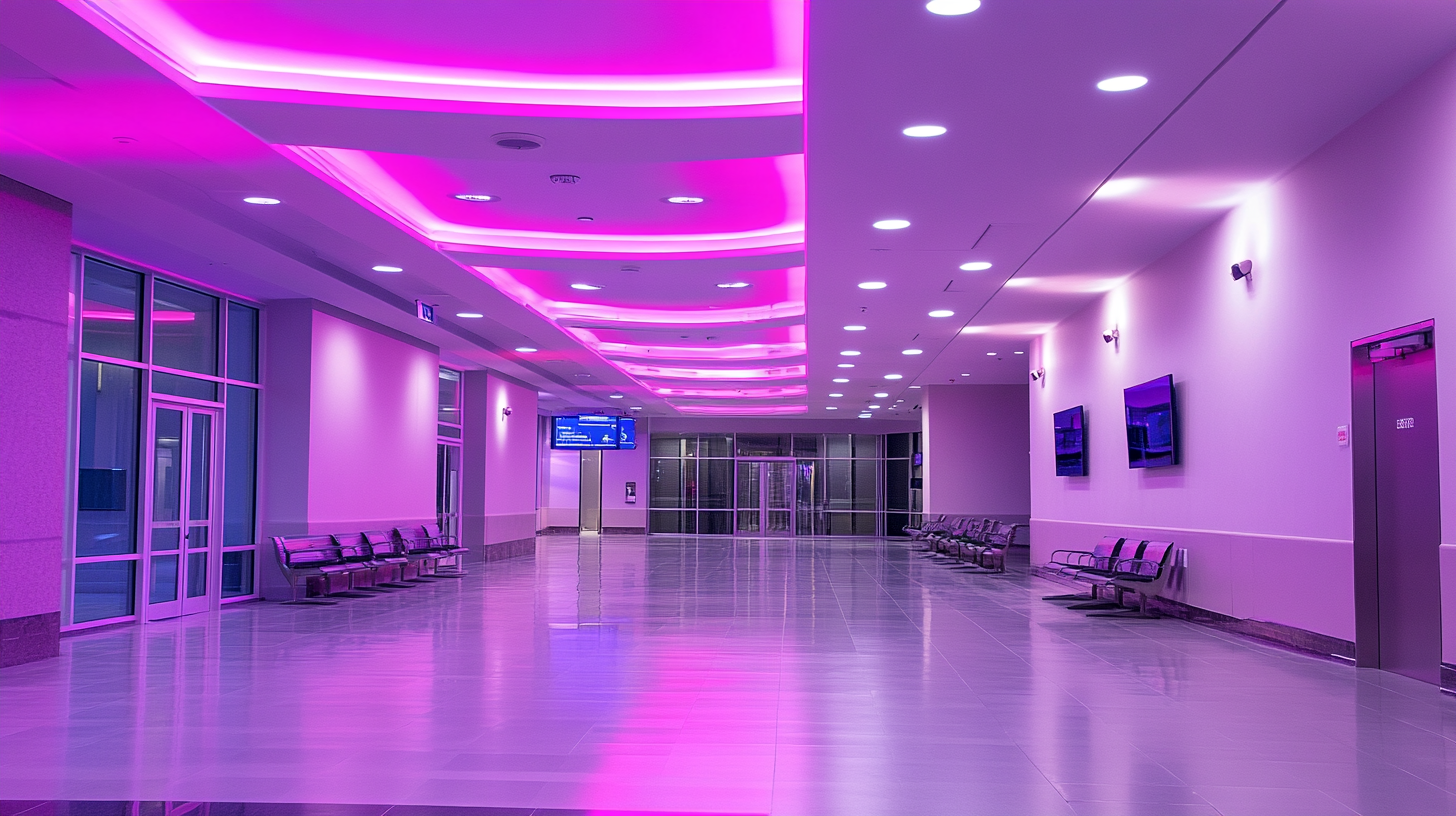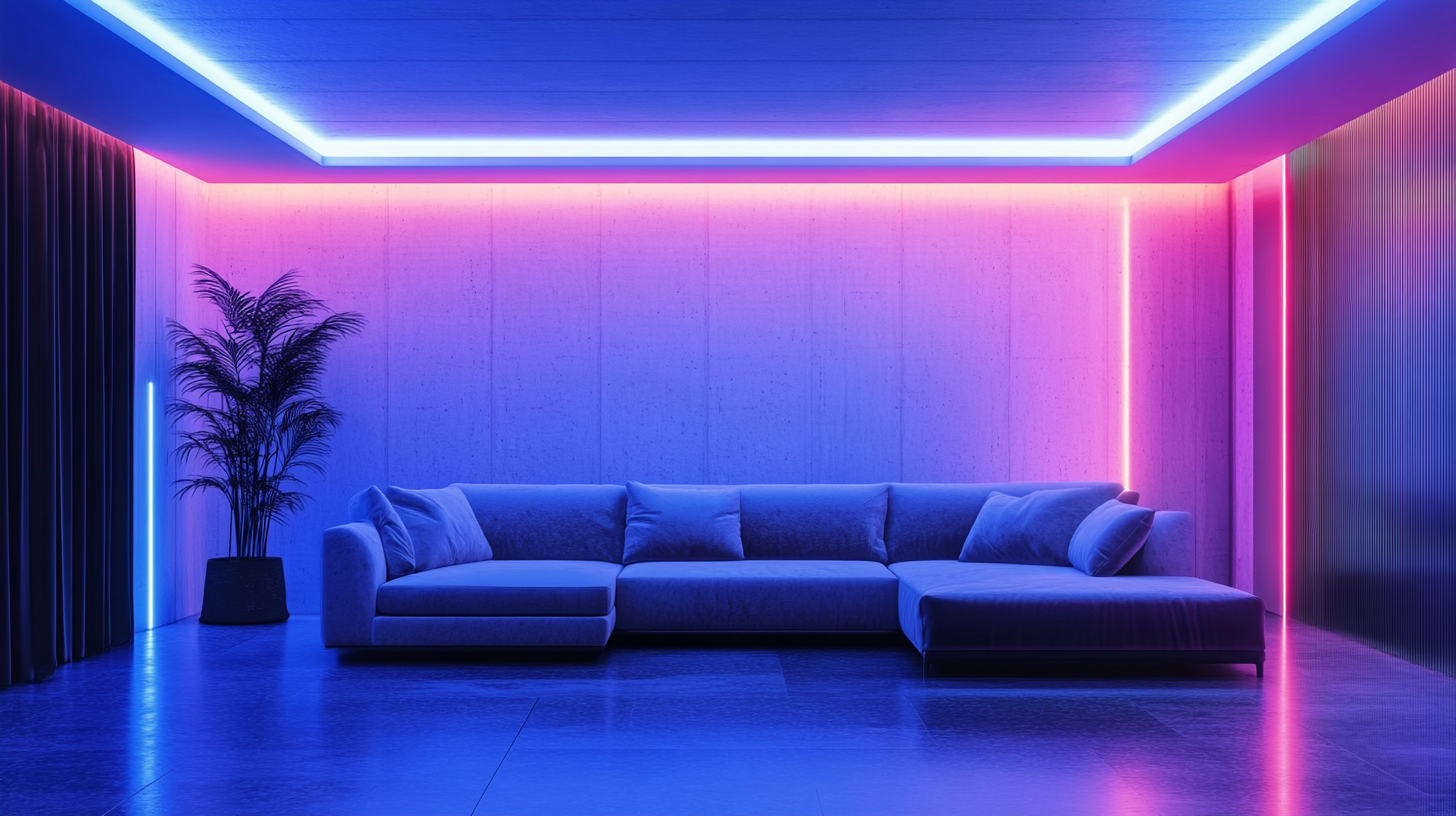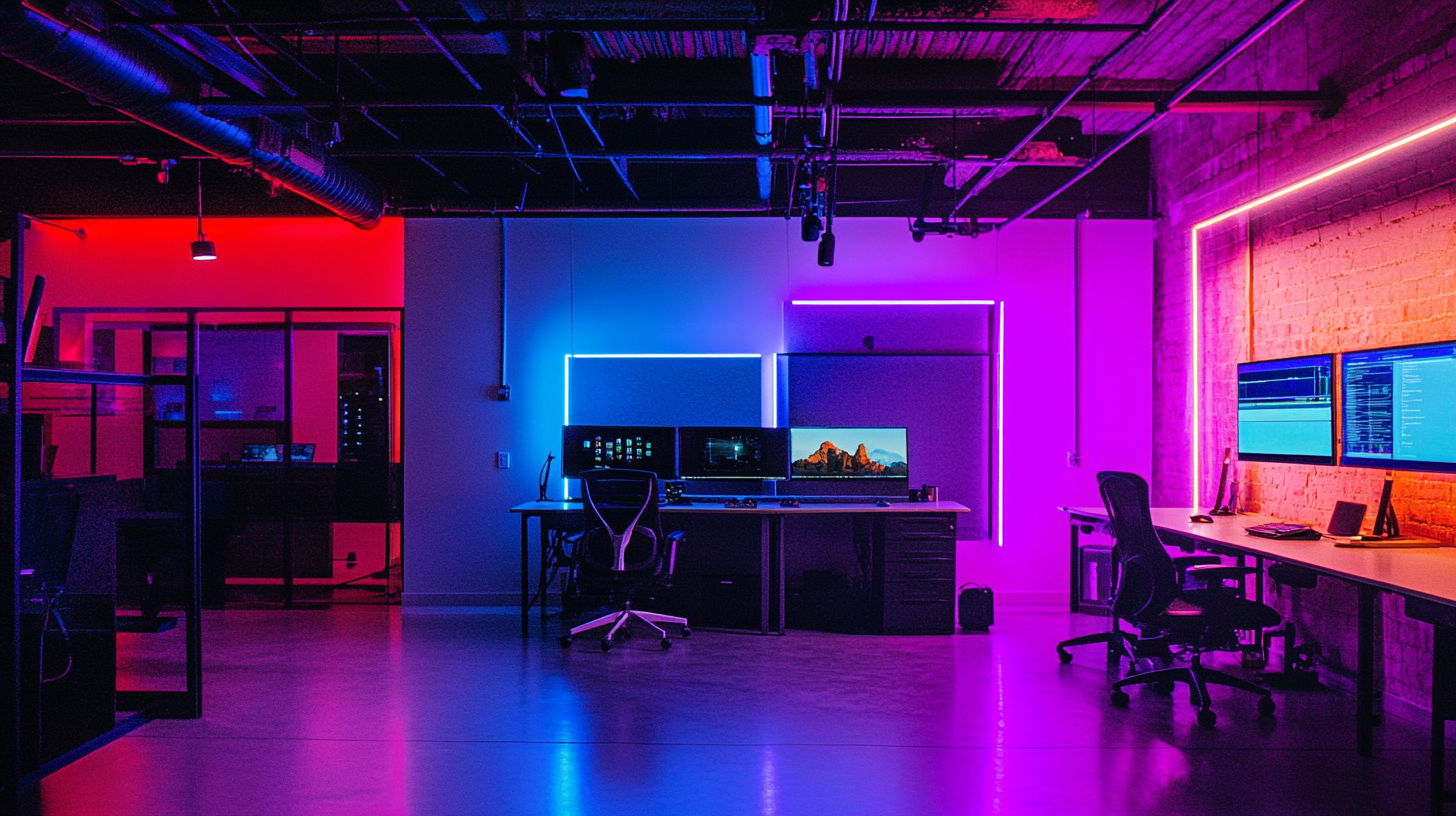Revolutionizing Global Lighting: How LED Fixtures Projected to Reach $160 Billion Market by 2025
Illumination is undergoing an unprecedented transformation worldwide, with LED fixtures gaining the crown of innovation-and-efficacy. As the world enters a more sustainable-age future, choosing an LED lighting system is no longer simply a trend, but a giant step for mankind into sustainable consciousness. With many anticipating that the LED fixture industry will reach about $160 billion by 2025, it is clear that this energy-efficient substitute is gradually changing the perception of lighting and its usages.
The LED fixture market's remarkable rise simply confirms its countless advantages, including under-consumption of energy, long life, and lower maintenance costs. As businesses and households begin to acknowledge the transformative nature of LED technology, it becomes evident that moving from conventional lighting systems to cutting-edge LED solutions is paving the way into a new sustainability era. This blog will discuss the driving factors behind this market growth, technological advances that nurture innovation, and the many advantages LED fixtures bring to consumers and industries around the globe.

The Rise of LED Technology: Transforming the Lighting Industry
LED technology gained remarkable recognition and is changing the lighting industry for an age that is defined by efficiency, sustainability, and innovation. From the current estimate, the Type A-Lamps segment alone is expected to attain a staggering USD 35.5 billion by 2030, indicating the strong growth prospects for this segment. The stupendous CAGR reveals the increased uptake of LED solutions as both consumers and businesses try to reduce their energy consumption while maximizing output. In vehicular lighting, it is stated that the on-highway vehicle lighting market could shoot up, given forecasts of growth from USD 31.35 billion in 2024 to USD 51.75 billion by 2034. This growth signifies not only demand for cutting-edge lighting technologies in automotive applications but also indicates a larger movement toward energy-saving lighting solutions in other industries. The introduction of LED fixtures into vehicles is one of the prominent ragens that increased safety and visibility as it is demanded by modern transportation. Alongside, solar street lighting is slowly emerging as a sustainable alternative that fits right into the framework of smart city projects. Heightened levels of awareness and its adoption are likely to have tremendous market ramifications. With this pair of LED technology and renewable energy sources, governments and urban planners are now searching for greener infrastructure, thus further signifying LED's transformative powers to furbish our urban landscapes. The combined effects of these trends serve to further illustrate the revolution that has been started by LED technology, placing LED prominently at the front and center of the global lighting industry.

Key Factors Driving the Growth of the LED Market Worldwide
The overall scenario witnessed in the global lighting industry today is quite impressive-the sole factor that influences change is the induction of LED technology throughout the world. Forecasts indicate that the market size will reach $160 billion by 2025, and there are several factors that float towards the global assimilation of LED technology. The increasing focus on energy efficiency and sustainability is one of the enthusiasts, coining the dollar sign for alternative forms of lighting to the average consumer and commercialized companies. These LED lights consume even lesser energy and are disposed of in a much more ecologically friendly manner.
As a result, it enables new applications through innovation and further diversification of their application sectors. For example, antibacterial LED panels are an upcoming market expected to grow from $2.24 billion in 2024 to $4.002 billion by 2032 as more focus is given to healthy indoor environments, especially in public spaces and health care services. Smart and IoT integral lighting has added another facet in making LED systems more attractive by integrating intelligent light customization and automated light variations as per the user's need.
This surge in special niches like emergency lighting and food processing lighting depicts the ever-widening scope of internal applications that LED technology allows. As many organizations introduce safety and operational efficiency improvement measures, the new world of emergency lighting is clearly going to be in the forefront of LED lighting solutions. Thus, this growth from all fronts in the LED sector welcomes the final touches to global lighting, very soon promising to change the way we conceive illumination in our environments.

Innovative Applications of LED Lighting in Various Sectors
With the introduction of LED technology, the lighting industry has undergone a massive transformation in how it approaches lighting in different sectors, leading to inventive applications that seem to go beyond traditional uses. In commercial applications, companies are using the LED-laden space to build customer engagement. Retail environments are deploying dynamic color-changing LED lighting to highlight merchandise and create moods that spur consumer spending. It is now compulsory for lighting designs to evolve with regard to the time of day and the seasonal changes, which has thus made LED systems and a worthwhile investment for every retailer who intends to stay ahead in this competitive market.
In the industrial arena, the impressive ramp-up in the use of LEDs has increased safety and efficiency. Factories and warehouses are fitted with more and more efficient LED lighting systems that cut energy costs while enhancing visibility for workers, thus minimizing accidents and improving productivity. Besides, smart lighting technologies that automatically adjust light output based on occupancy are further reducing energy waste and operational expenses.
The healthcare sector has also taken to LED innovations, using these specialized lights to benefit patient outcomes. Hospitals and clinics are using tunable white LEDs that can enter an effect in regulating circadian rhythm for both patients and staff by mimicking the presence of natural daylight. The agricultural area is another field where LEDs have started to shine, with researchers studying their potential for indoor farming and horticulture to enhance plant growth under controlled light spectrums. This wide array of applications shows the versatility and the power of LED lighting in transforming various fields, thus paving the way for a brighter, more sustainable tomorrow.

Environmental Impact: Energy Efficiency and Sustainability of LEDs
This is not just a trend in shift; it implies real movement of energy efficiency and sustainability. As per the report of the IEA, the international energy demand for lighting systems is likely to go down by almost 50% towards 2030, mainly enabled by the adoption of LED technology. LED lights consume 75% less energy and save further lives, unlike incandescent or fluorescent bulbs, having the capacity of lying up to 25 times longer, reducing the carbon footprint in this area.
But environmental advantages go beyond energy saving. A US Department of Energy study found that if all Americans changed their traditional bulbs to LEDs, $30 billion per year would be saved from electricity costs, together with 44 new power plants built, and 100 million metric tons of greenhouse gases that prevented emissions. More consumers and businesses become conscious about the importance of sustainable practices; thus, there is a rising demand in the market for LED fixtures projected to shoot up more than $160 billion by 2025.
LEDs are energy-efficient and greenhouse gas-reducing but contribute to sustainability through recyclability. Traditional bulbs involve hazardous material like mercury, which is hazardous to health and the environment when disposed. But LEDs are free from toxic substances and become recyclable thereby, lessening their impact on landfills. It would, therefore, change dramatically the way in respect to lighting as industries as well as municipalities race towards greener operations.
Future Trends: What to Expect in the LED Market by 2025
It looks like the LED market can be well transformed by 2025 due to Mini and Micro LEDs and modern technologies. The shift towards digital could increasingly necessitate these types of lighting solutions from industrial lighting to commercial displays. The transition to these LED fixtures represents a booming opportunity for further energy efficiency, cost reduction, and improved user experiences with the anticipated global market growth to $160 billion.
But, it is not all rosy. The recent stagnation phenomenon in growth inside the China's LED industry sounds a clarion call as to the possible avenues of blocking markets' competitors. Application-induced demand decreasing and resultant fierce competition eroding profits for the smaller companies end up being defined. But indeed, companies shift strategies of focusing toward Southeast Asia or introduce advanced technologies and discover new opportunities for growth and innovation, leading to the momentum.
In the automobile sector, it indicates a major transformation in design by integrating LED lighting with intelligent systems. As such, with intelligent technologies taking hold in the automotive market, LED lighting will move from simple illumination to multifunctional devices that would enhance both safety and performance. This proves the significant diversity of LED technology and sets the phase for a future wherein lighting becomes an integral part of the entire user experience across industries.
